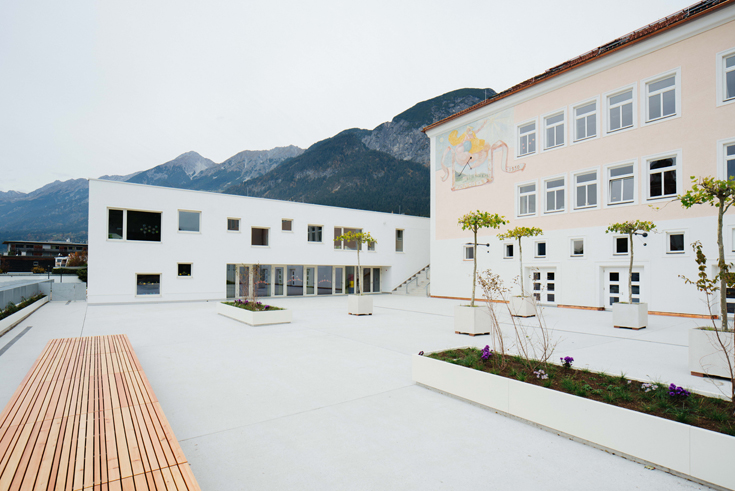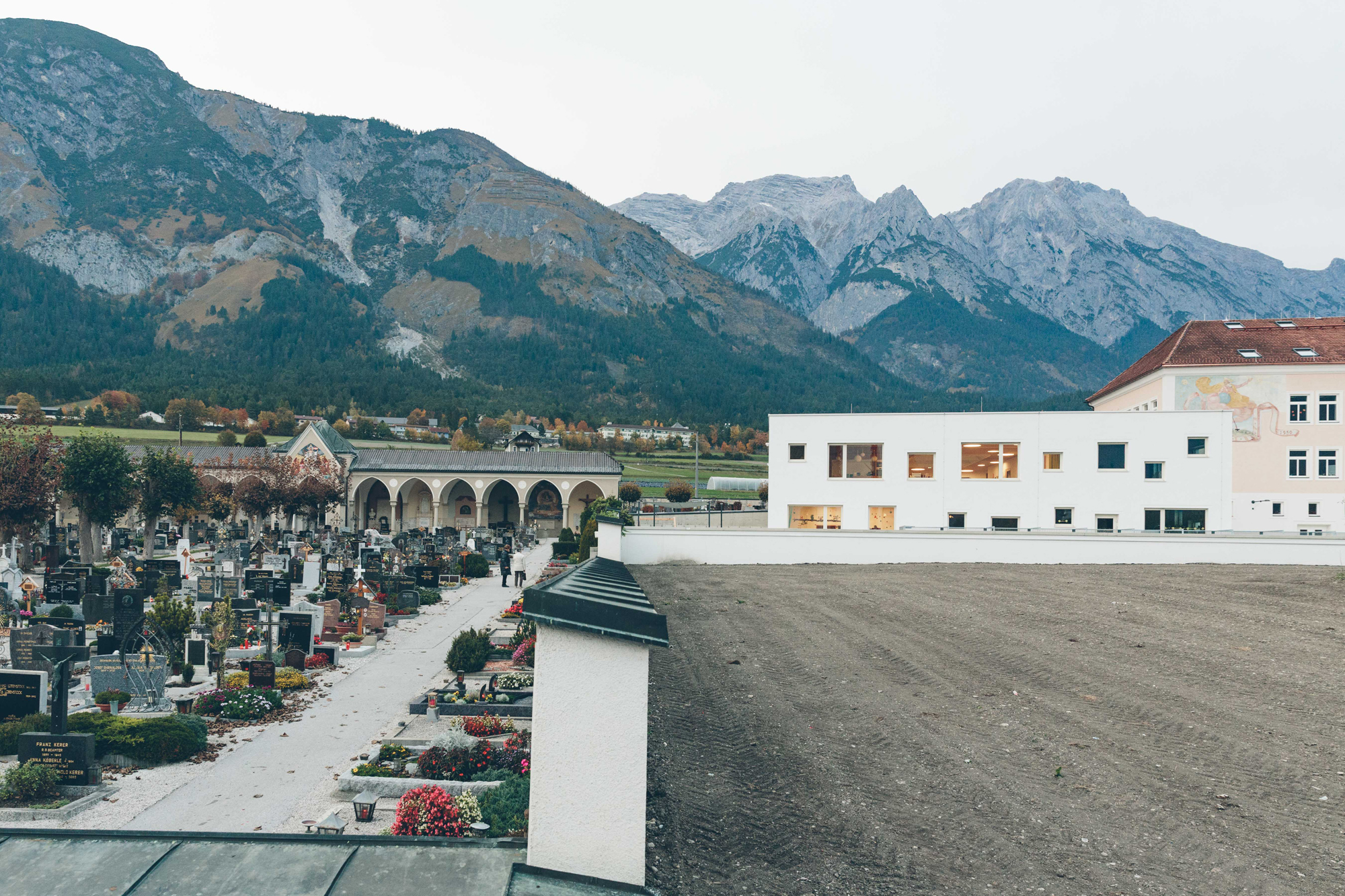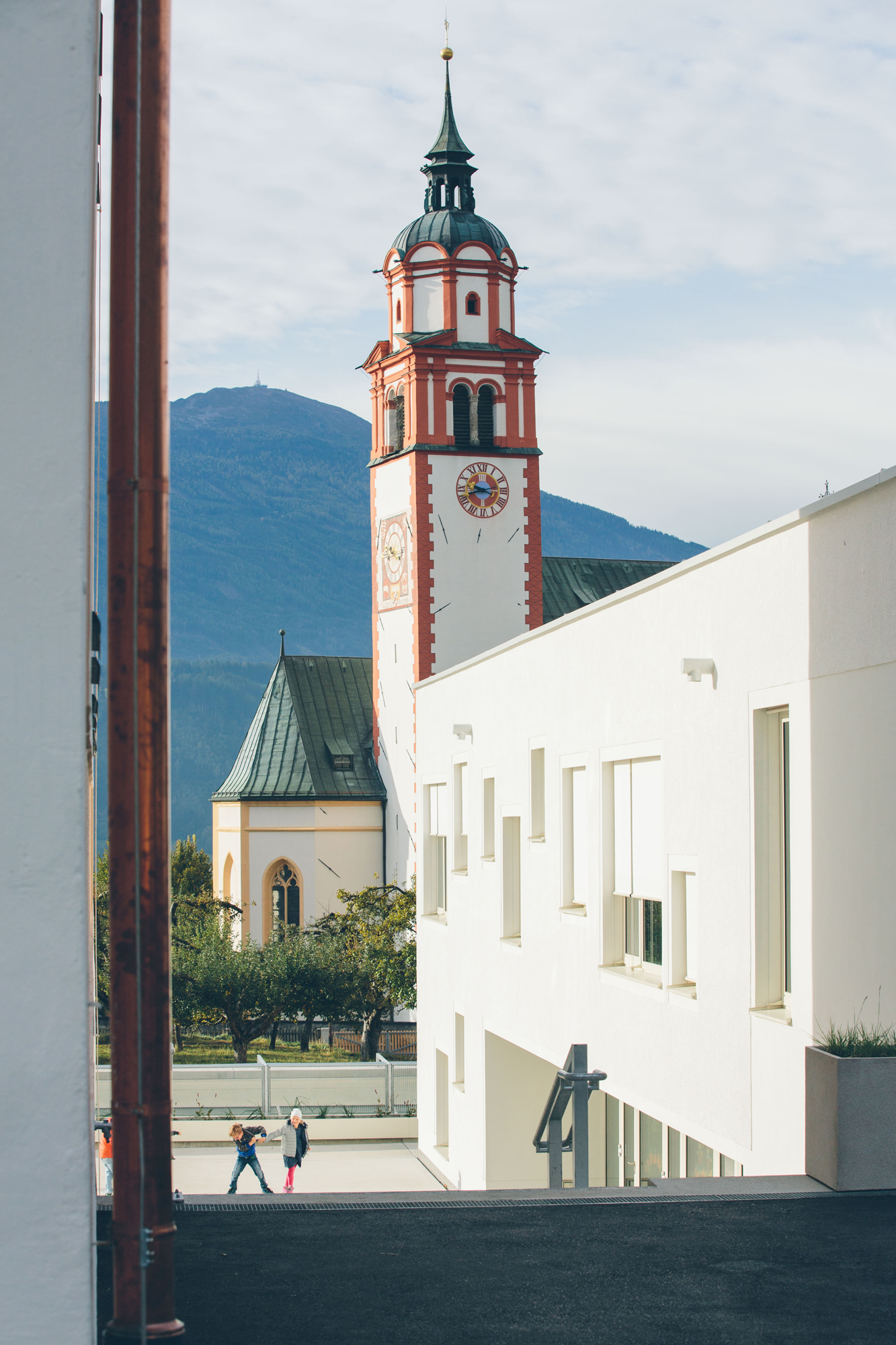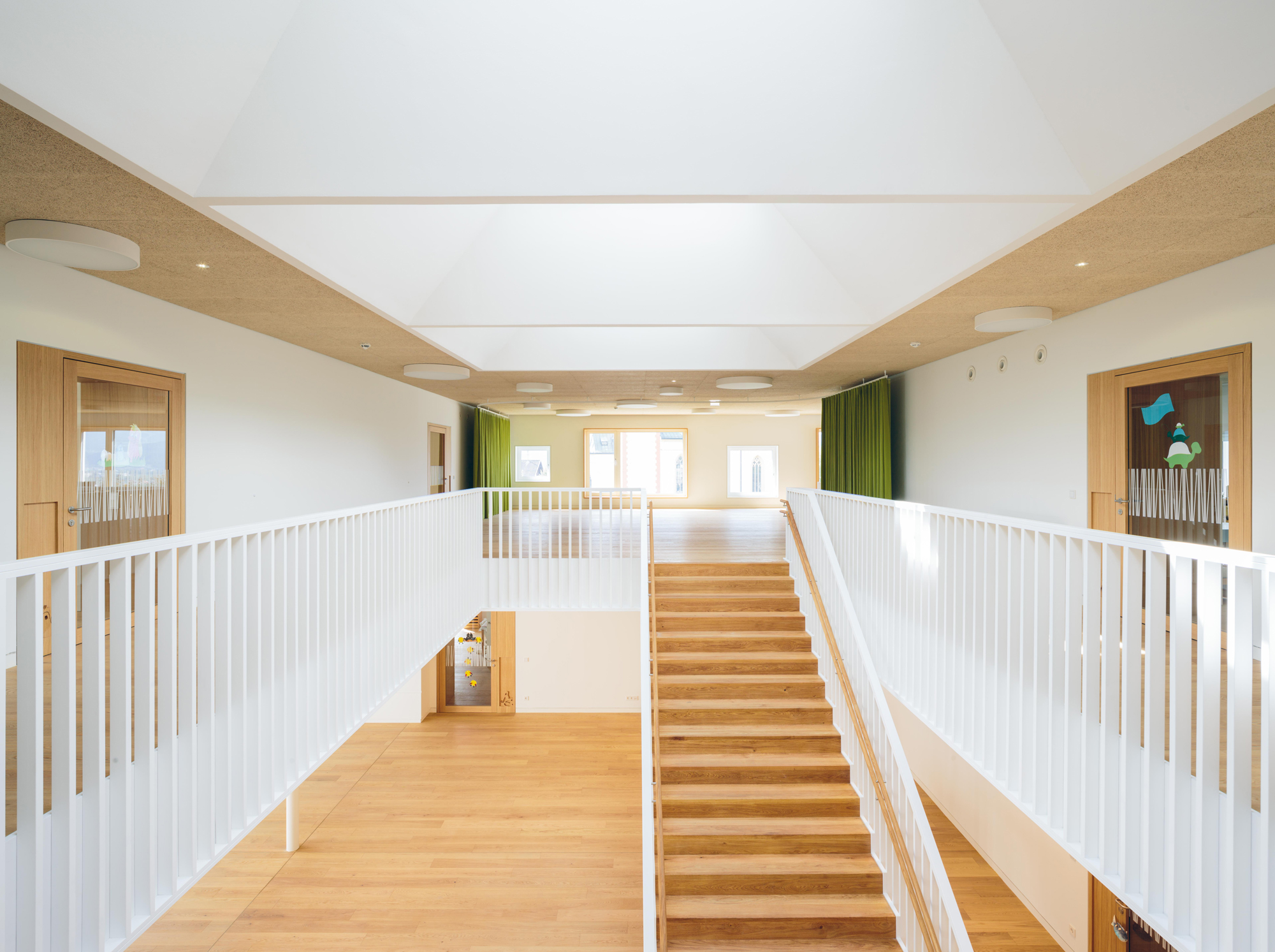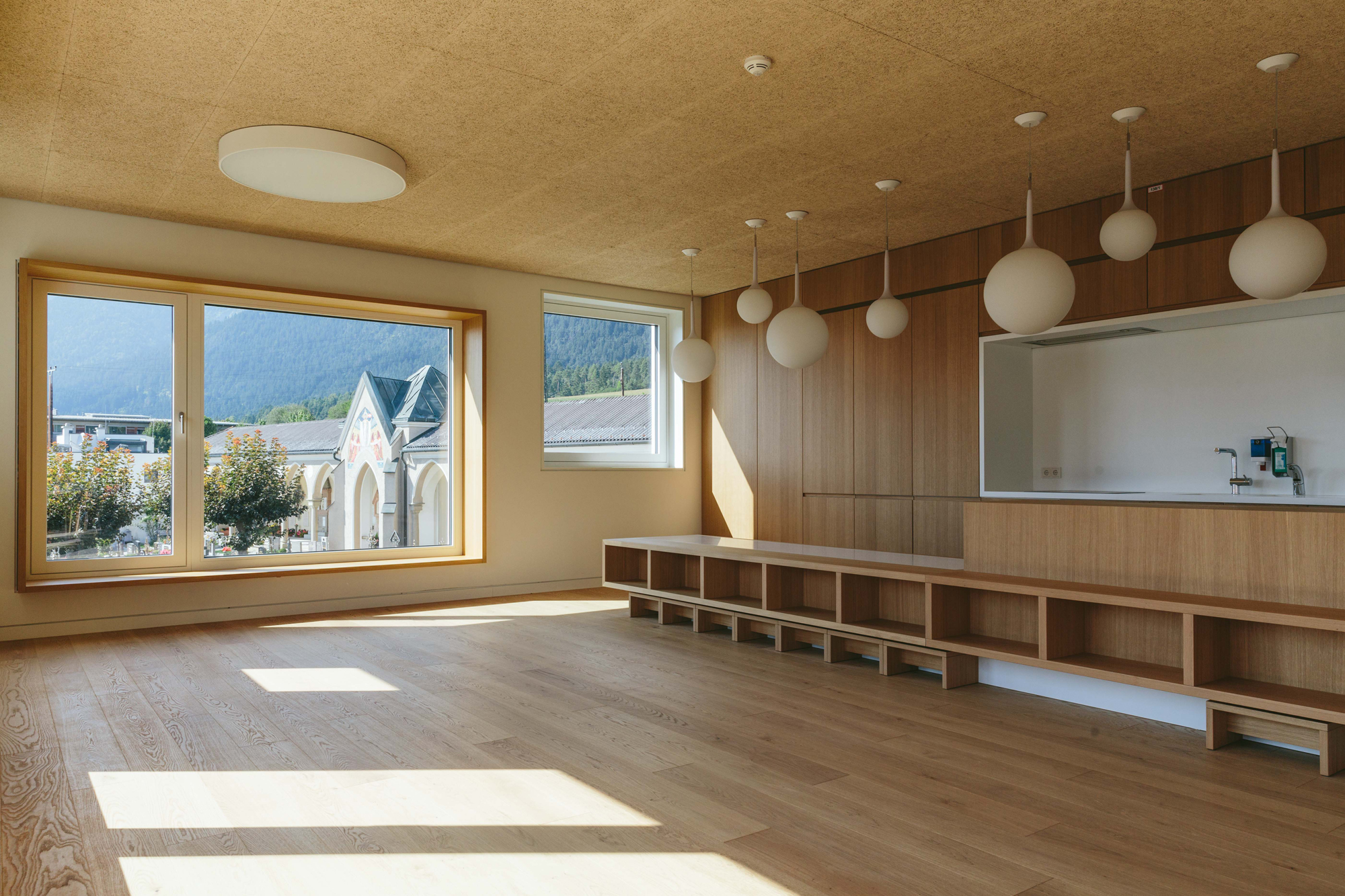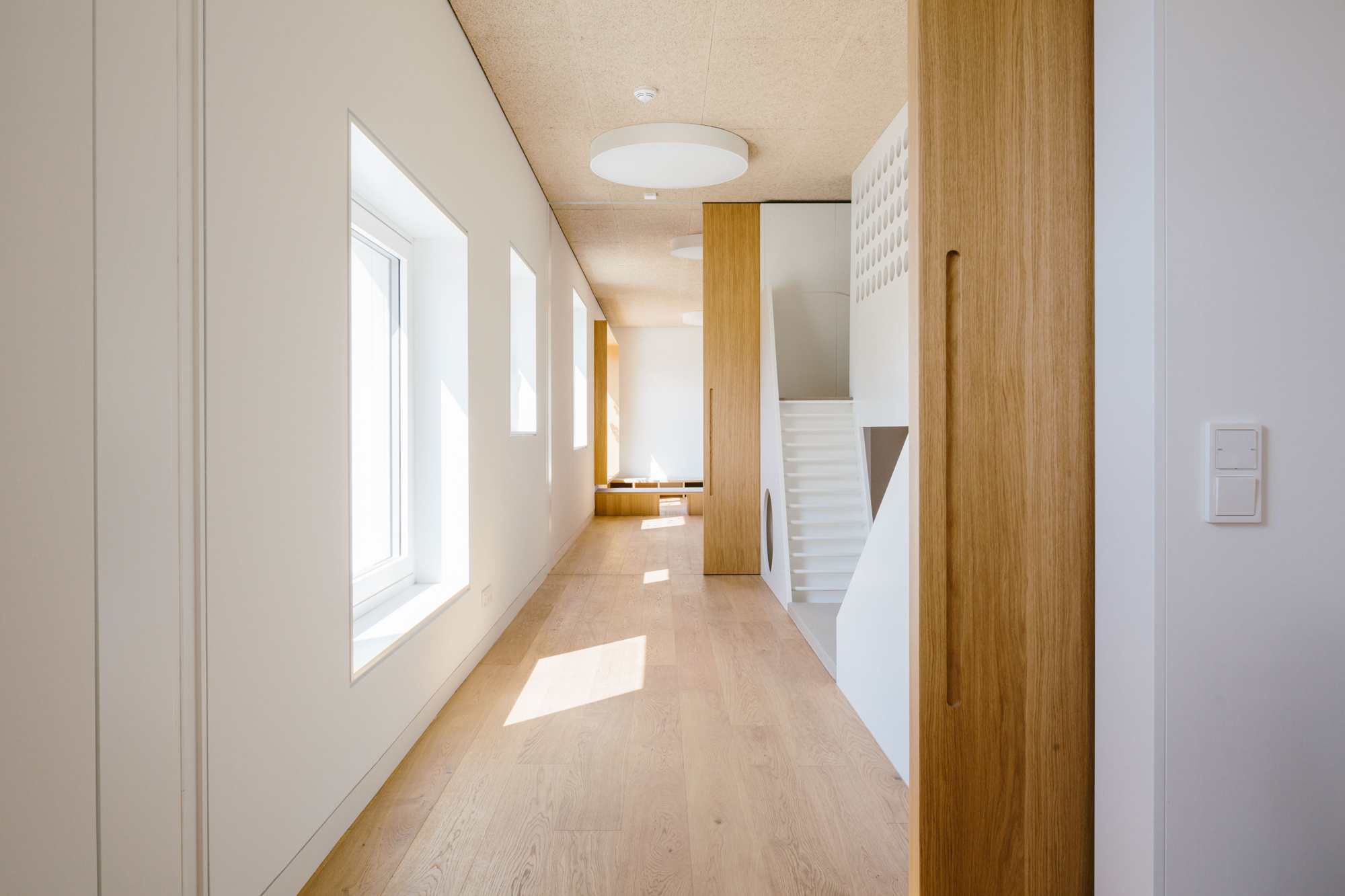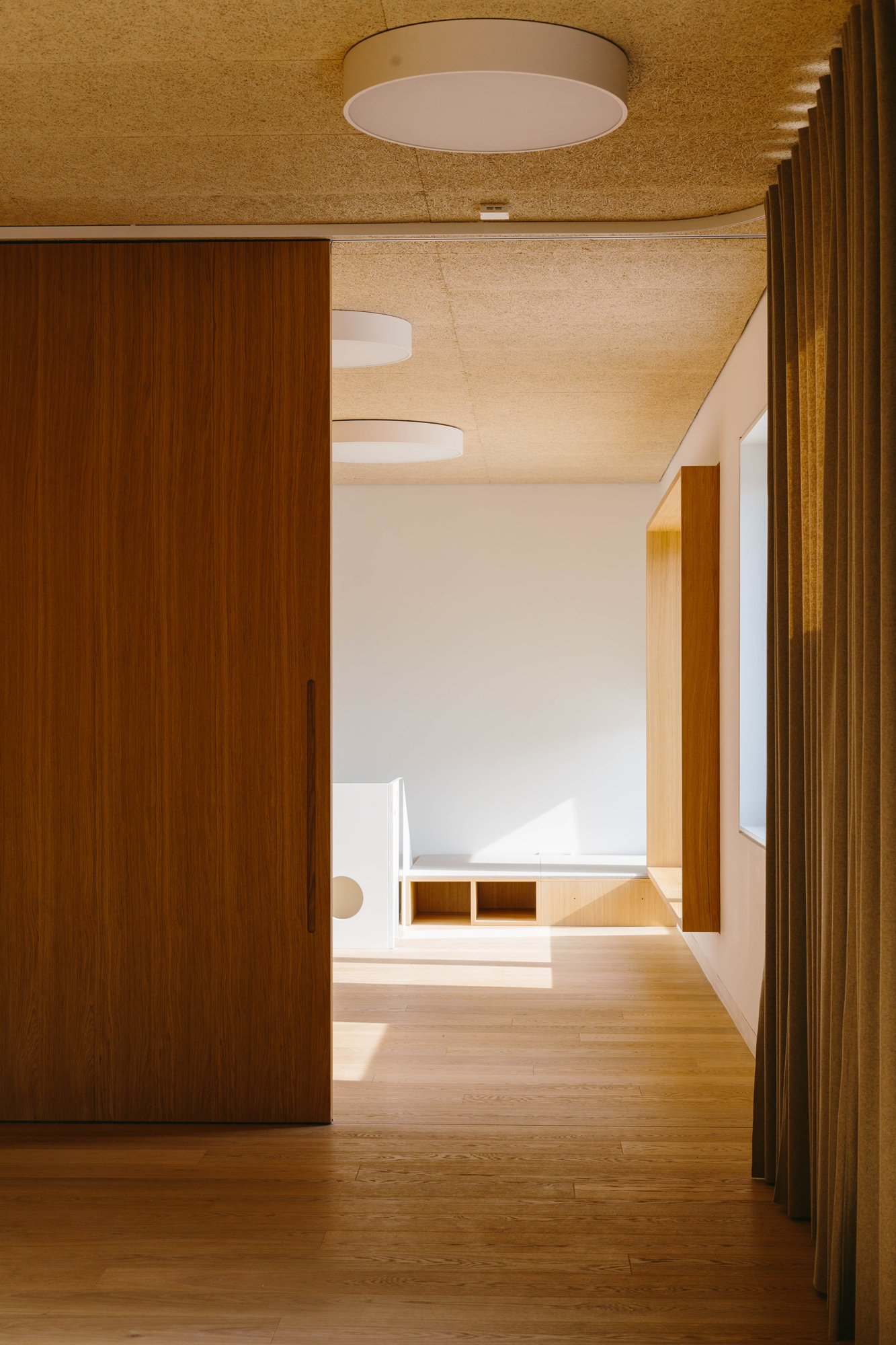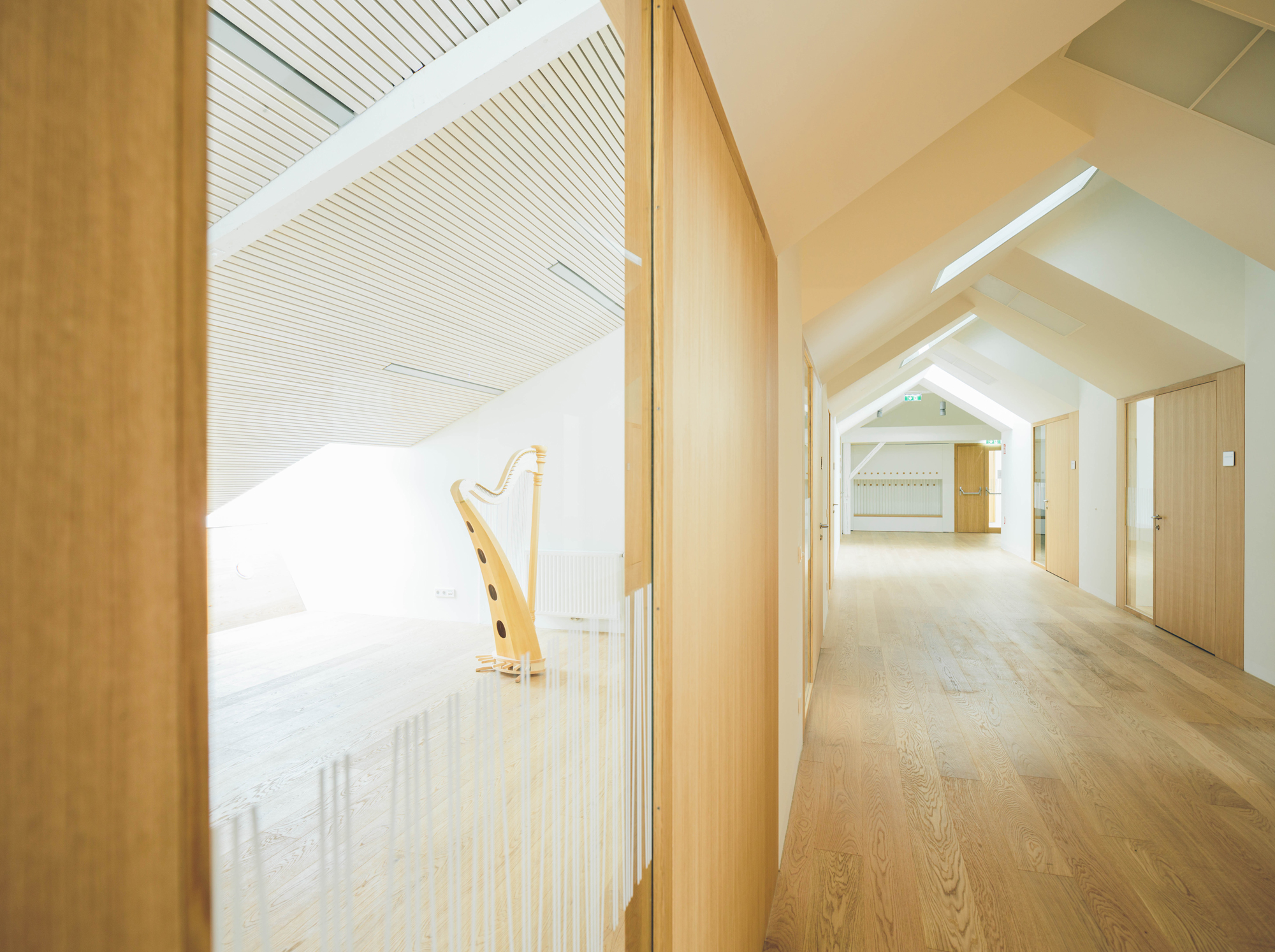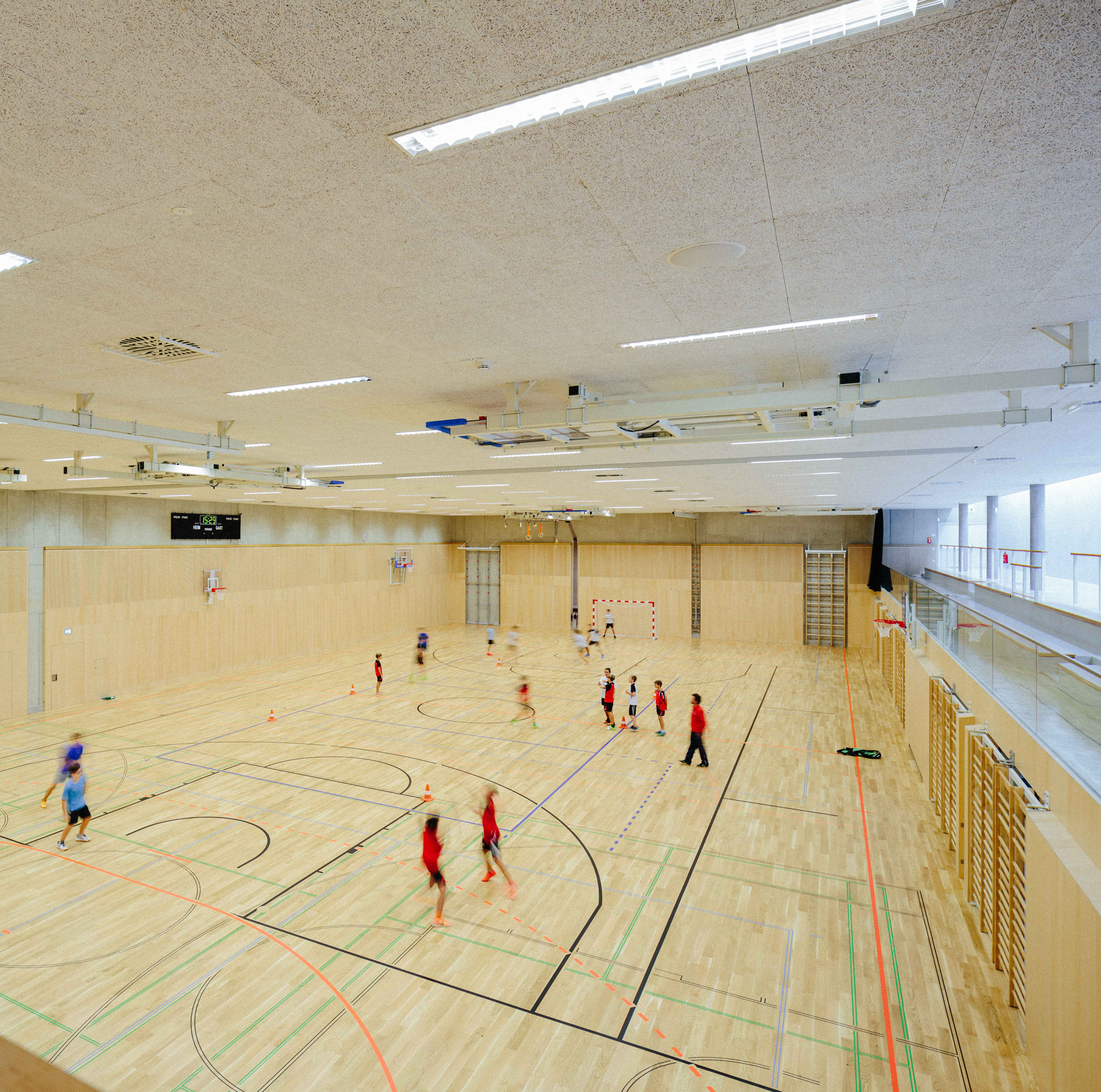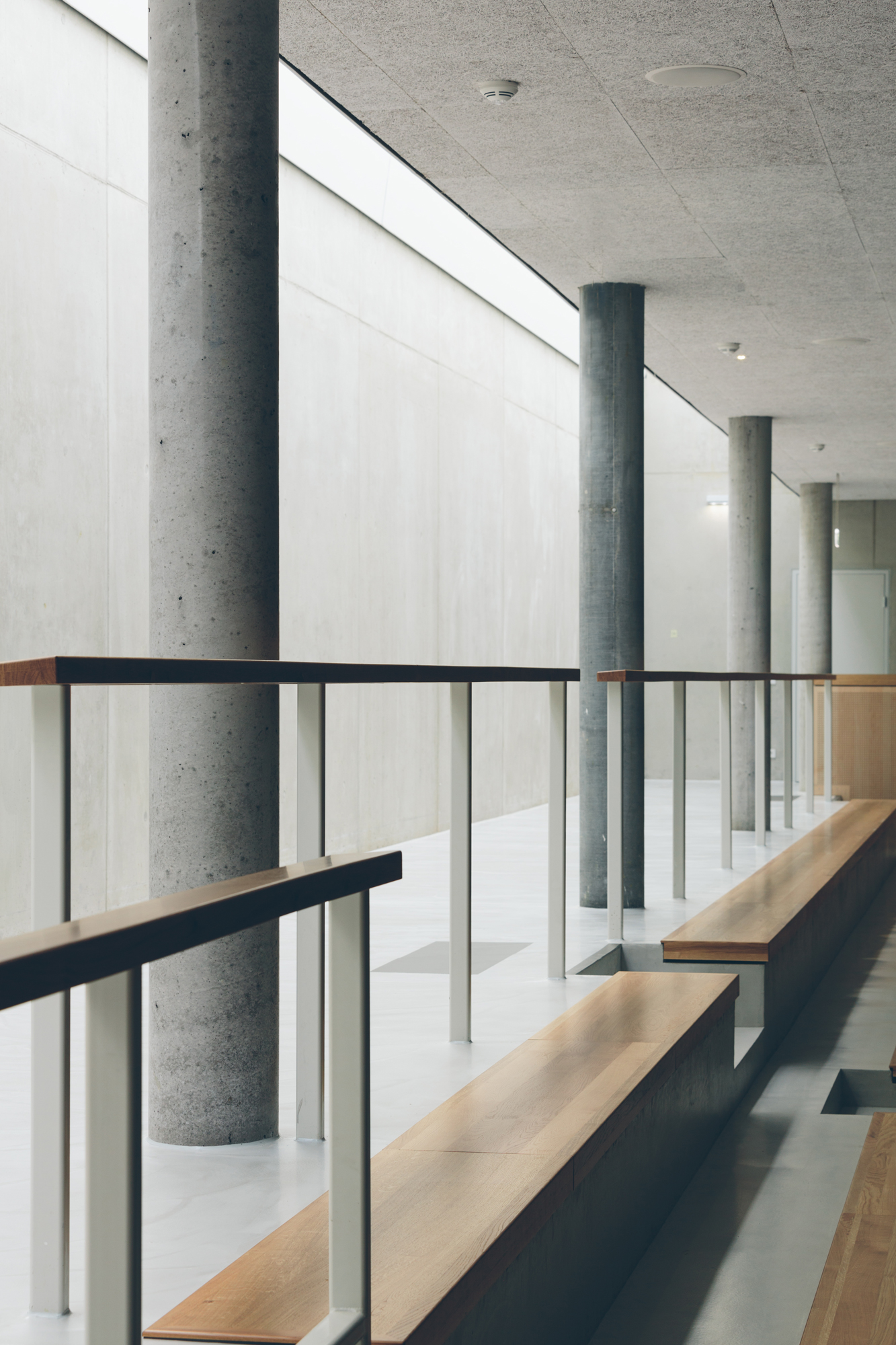From Cellar to Attic: School Expansion in Absam

Foto: Bengt Stiller
In Absam, which is near Innsbruck, the cycle of life is visible to all: the primary school stands at the northwest edge of this community of 7,000. The cemetery is next door, and then there are open fields which extend to the foot of the Karwendel mountain range. As winners of a competition announced in 2013, Schenker Salvi Weber were commissioned with expanding the old building by a kindergarten and a three-court gym. Moreover, they were charged with creating a music school in the attic of the schoolhouse. Around 4,000 square metres of total floor area were available on the school grounds without disturbing the overall look of the town.
Among the 20 participants in the competition, Schenker Salvi Weber were the only ones to propose placing the gymnasium underground and the kindergarten on top of the building. The remaining roof surface could be used as a schoolyard.
This makes the two-storey kindergarten the most visible element of the school expansion. It was erected as a two-storey passive energy house, but plastered with light-coloured sgraffito. “We decided in favour of sgraffito because mineral-based façades with window edging are typical for Absam”, the architects comment on their choice. “For us, a harmonious overall staging in such historical village surroundings was more important than setting a new, loud accent.”
Inside the building, eight group spaces surround a large access hall that is lit from above. 120 kindergarten children and 24 crèche-age kids can be looked after here. Sliding doors and curtains enable the kindergarten teachers to divide or unite the room as needed. Windows with deep sills and soffits, where it is comfortable to sit, allow even the smallest children a view of the outdoors.
Throughout the new spaces, the material palette is bright, yet muted as well. White balustrades and cupboard fronts, green felt curtains, built-ins and hardwood floors of oiled oak and light-brown excelsior acoustic panels on the ceiling set the mood for the spaces, which are filled with life and colour by the children.
Heraklith panels (here in white) and oakwood (as a surface for the benches) can also be found in the subterranean gym. Otherwise, cool exposed concrete dominates in the bleachers. The floor and impact walls of the gym consist of wood; they were inserted into the shell construction like a drawer. A narrow skylight behind the bleachers allows daylight in and creates at least a small visual connection between the gym and the schoolyard on its roof. The excavation work for the gym presented a challenge because it extended all the way to the foundation of the old primary school. The prefabricated T-shaped trusses of reinforced concrete intended for the gym roof had to be measured to span the space without supports, yet they had to be transported over the narrow rural roads to the building site.
The new conservatory set up under the hipped roof of the old building measures 550 square metres. The roof surface on both sides have each been ornamented with two rows of roof windows – one right at the ridge and one directly above the knee wall. Six practice rooms are arranged along the central access corridor; at the end there is a larger hall for presentations and concerts. In order to save space, the architects forwent the usual chairs and instead had this hall equipped with seating steps that line the edges of the room. Even the seating steps are covered with – big surprise– oakwood surfacing.
The roof structure has been painted white and its interior surfaces have been fitted with acoustically effective cladding of white-glazed wooden slats.
Team: Bettina Doser, Sophie Gerg, Teresa de Miguel, Thomas Morgner, Hans Reumann, Barbara Roller, Tiago Santana, Michael Salvi, Andres Schenker, Verena Theil, Tina Tobisch, Katalin Tóth, Rowena Ullrich, Thomas Weber
Structure planning: Merz Kley Partner
Acoustics and Building Physics: IBO – Österreichisches Institut für Bauen und Ökologie
Building technology: Moser + Partner Ingenieurbüro
Landscape planning: DnD Landschaftsplanung

